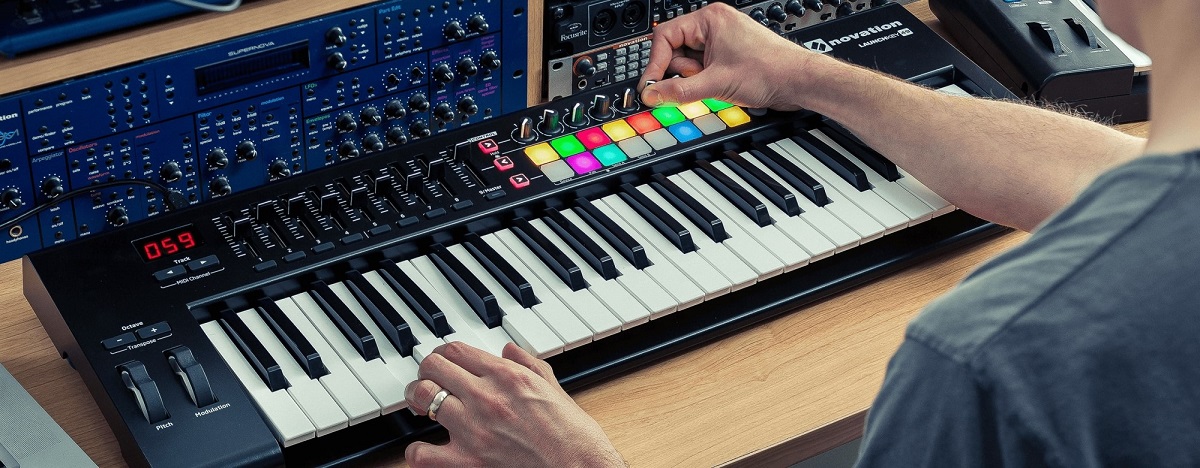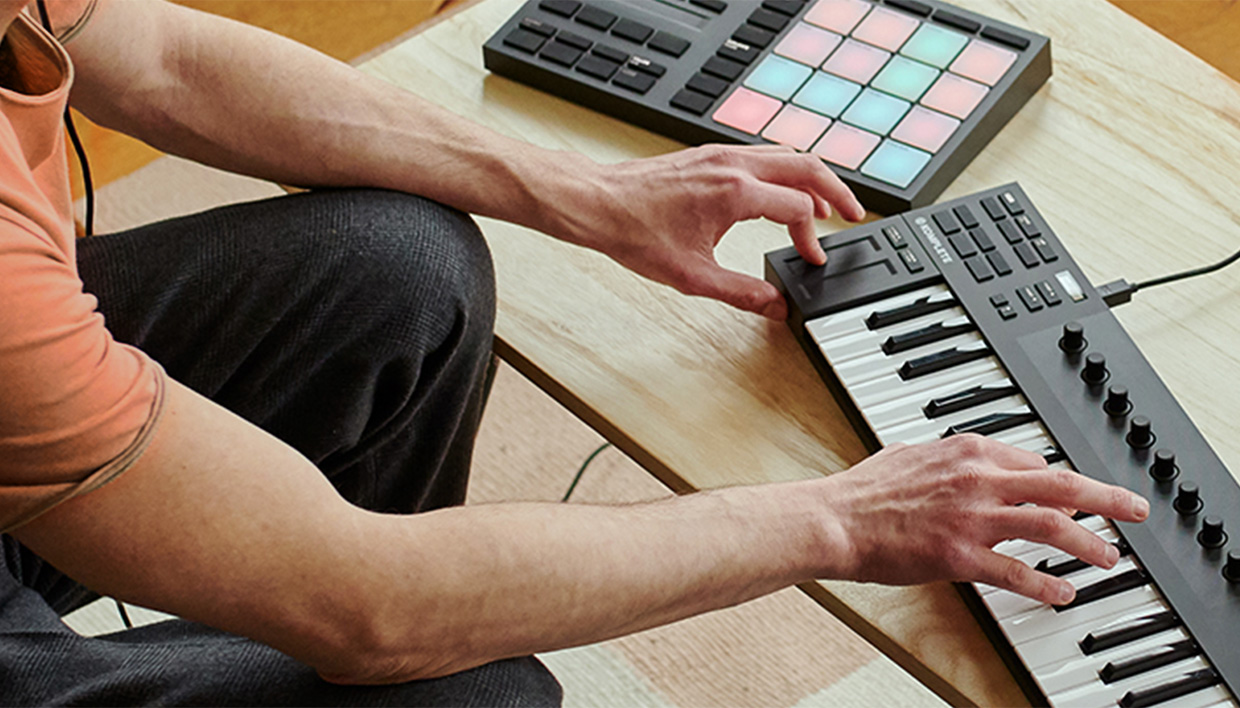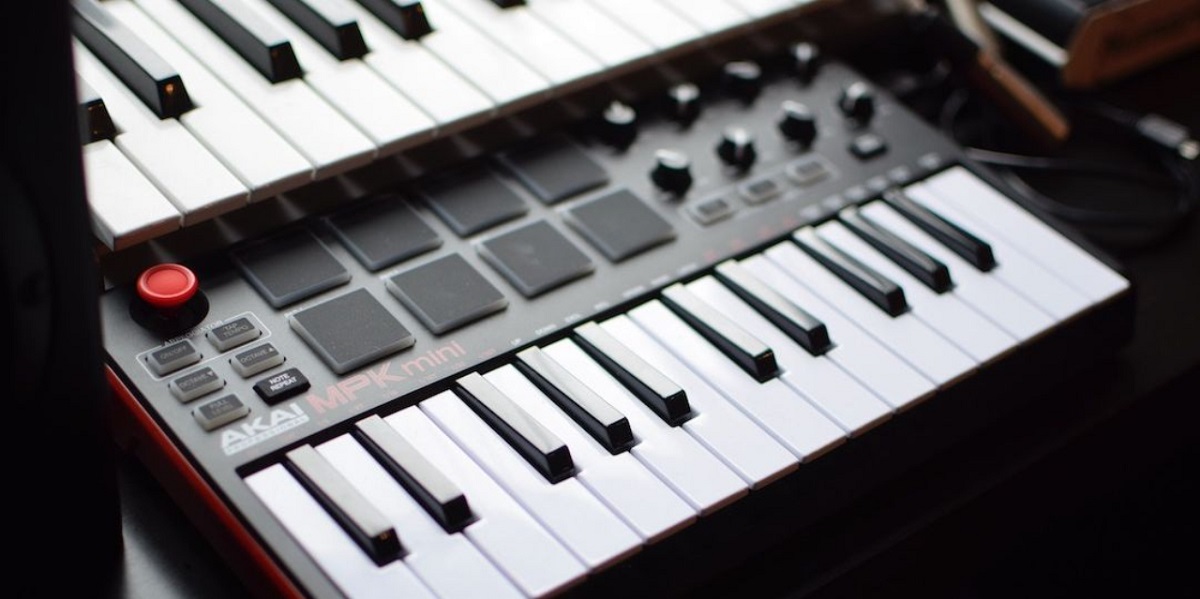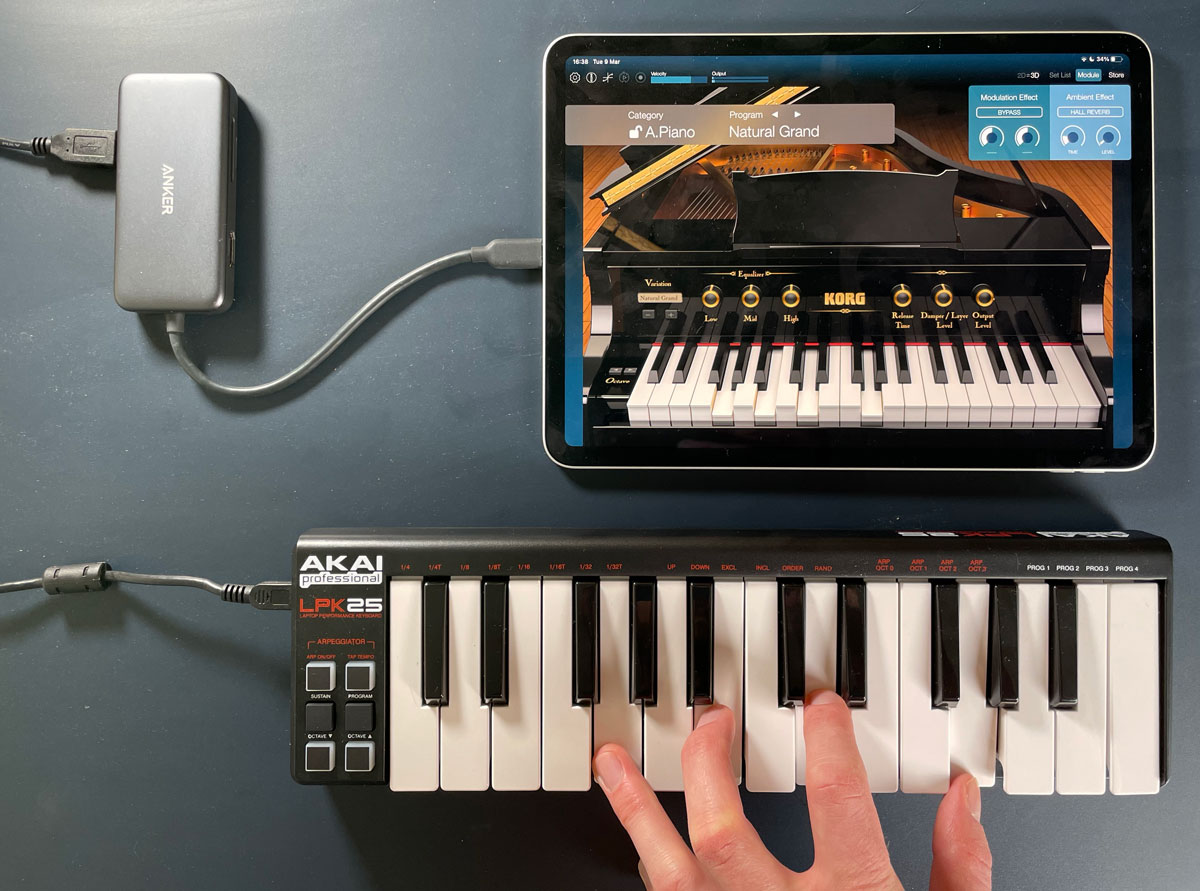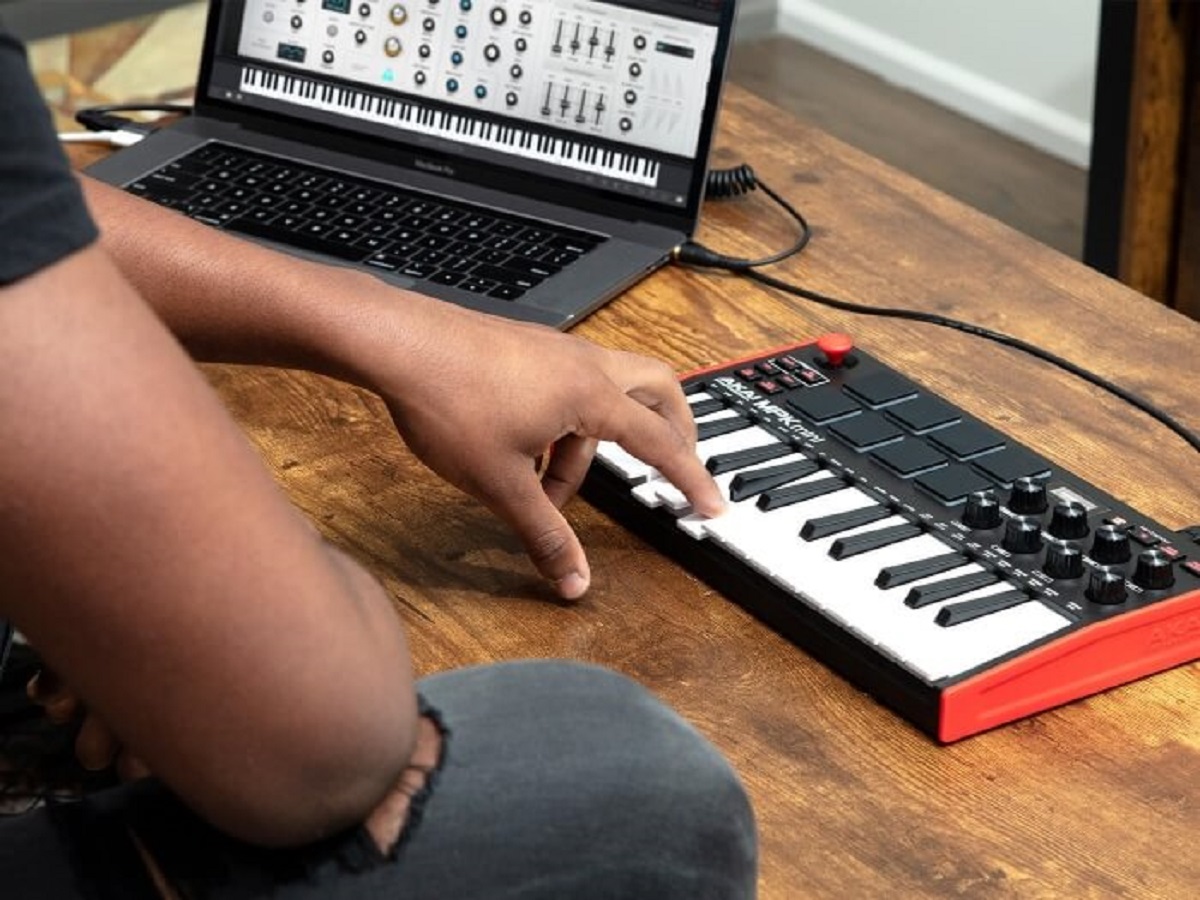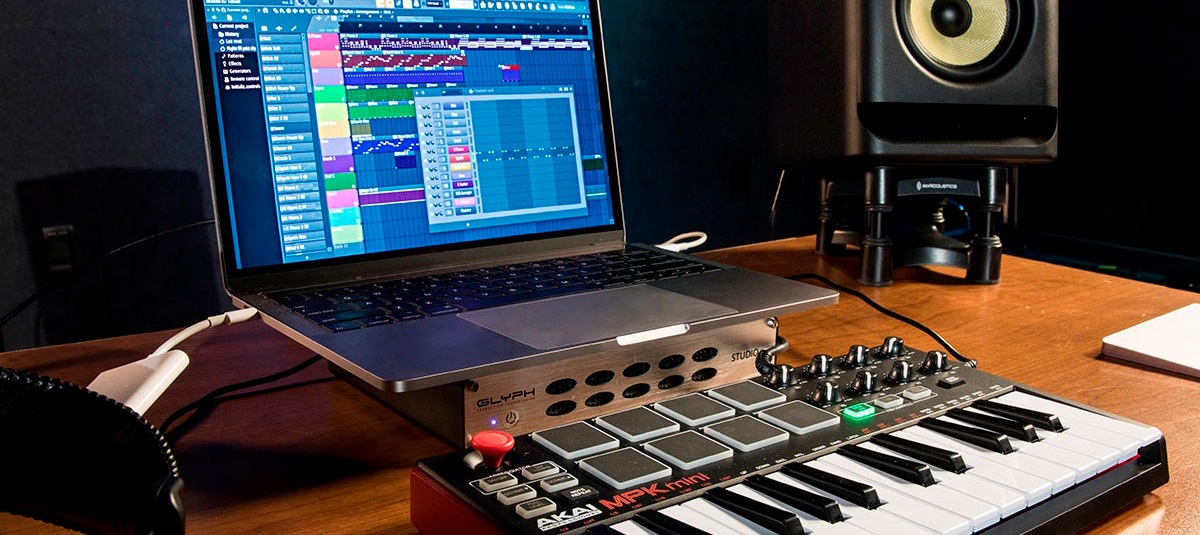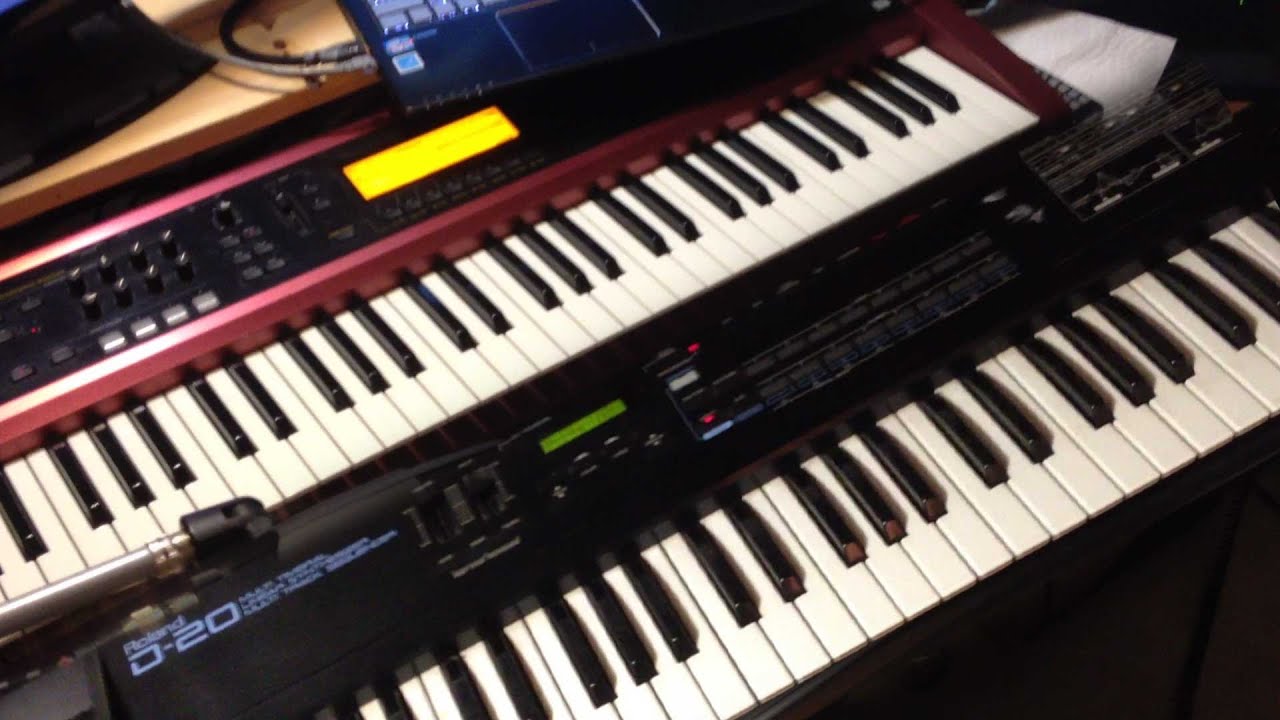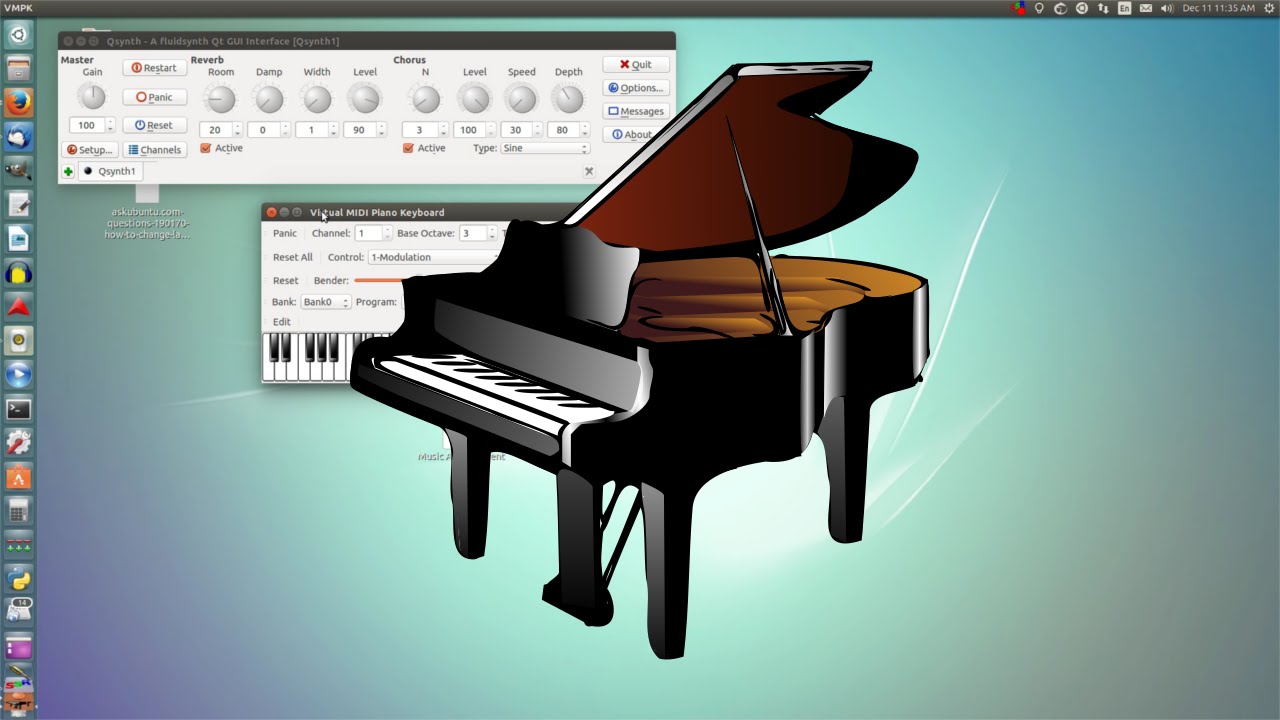Introduction
So, you've got yourself a MIDI keyboard and you're ready to dive into the world of music production. Whether you're a seasoned musician or a complete beginner, playing music with a MIDI keyboard can be a truly enriching experience. MIDI (Musical Instrument Digital Interface) keyboards have revolutionized the way music is created, allowing for seamless integration with digital audio workstations (DAWs) and offering a wide range of sounds and effects.
Playing music with a MIDI keyboard opens up a world of possibilities, enabling you to create, perform, and record music with incredible flexibility and precision. In this guide, we'll walk you through the essential steps to get started with your MIDI keyboard, from choosing the right one for your needs to setting it up and playing music using a DAW.
Whether you're interested in composing your own music, remixing existing tracks, or simply jamming along with your favorite songs, a MIDI keyboard can serve as a versatile tool for unleashing your creativity. With its ability to replicate the sound of various instruments and its intuitive interface, a MIDI keyboard offers a dynamic and expressive way to interact with music.
Throughout this guide, you'll learn how to connect your MIDI keyboard to your computer, set up your DAW, and start playing and recording music. We'll also explore how to add effects and edit your MIDI recordings to enhance your musical creations. By the end of this journey, you'll have the knowledge and confidence to harness the full potential of your MIDI keyboard and embark on a captivating musical adventure. So, let's begin this exciting musical odyssey and unlock the endless possibilities that await you with your MIDI keyboard.
Choosing the Right MIDI Keyboard
When it comes to choosing a MIDI keyboard, there are several factors to consider to ensure that it aligns with your musical preferences and production needs. The first consideration is the number of keys. MIDI keyboards come in various key counts, ranging from compact 25-key models to full-sized 88-key pianos. If you primarily play piano or keyboard-based instruments, a full-sized keyboard may be ideal for replicating the feel of a traditional piano. On the other hand, if portability is a priority or if you have limited space, a smaller key count may be more suitable.
Another crucial aspect to evaluate is the keyboard’s features. Some MIDI keyboards offer additional controls such as drum pads, faders, knobs, and buttons, which can be valuable for manipulating sounds and triggering loops. These features can significantly enhance your creativity and streamline your workflow, especially if you’re interested in electronic music production or live performance.
Consider the connectivity options provided by the MIDI keyboard. Most keyboards connect to a computer via USB, but some also offer MIDI connections for broader compatibility with external hardware. Additionally, if you plan to use the keyboard with iOS devices, ensure that it is compatible with iOS and includes the necessary connectivity.
The keyboard’s sensitivity and action are essential factors to contemplate. Keyboards with weighted or semi-weighted keys offer a more piano-like feel, while those with synth-action keys are more lightweight and responsive, making them well-suited for lead synth and organ sounds. The sensitivity of the keys, often referred to as velocity sensitivity, determines the keyboard’s ability to convey dynamics in your playing, allowing for nuanced expression and articulation.
Lastly, consider the bundled software and virtual instruments that come with the MIDI keyboard. Many manufacturers include software packages with their keyboards, offering a range of sounds, effects, and recording capabilities. Assess the compatibility and quality of the bundled software to determine if it aligns with your music production goals.
By carefully evaluating these factors, you can select a MIDI keyboard that complements your musical style, accommodates your production setup, and empowers you to unleash your creativity.
Connecting Your MIDI Keyboard
Once you’ve chosen the right MIDI keyboard, the next step is to connect it to your computer or music production setup. Most MIDI keyboards utilize a USB connection, making it straightforward to establish a link with your computer. Simply plug one end of the USB cable into the MIDI keyboard and the other end into an available USB port on your computer. The majority of modern operating systems automatically recognize MIDI devices, so you can seamlessly integrate your keyboard with your digital audio workstation (DAW) without the need for additional drivers.
If your MIDI keyboard features traditional MIDI ports, you can connect it to an external audio interface or MIDI interface using MIDI cables. This setup is beneficial if you prefer to use dedicated audio interfaces for high-quality audio input and output, especially in professional recording environments.
For musicians who wish to incorporate iOS devices into their music production workflow, some MIDI keyboards offer compatibility with iOS devices through a Lightning connector or USB adapter. This enables you to use your MIDI keyboard with music production apps on your iPhone or iPad, expanding the versatility of your setup.
After establishing the physical connection, it’s essential to configure the MIDI settings within your DAW. Access the preferences or settings menu in your DAW and locate the MIDI or external devices section. Here, you can select your MIDI keyboard as a MIDI input device, allowing your DAW to receive MIDI data from the keyboard. Additionally, you may need to enable MIDI clock synchronization if you intend to sync your keyboard with other MIDI devices or software instruments in your setup.
Some MIDI keyboards offer additional connectivity options, such as pedal inputs for sustain or expression pedals, as well as CV/gate outputs for interfacing with analog synthesizers and modular gear. These expanded connectivity features provide greater flexibility for integrating your MIDI keyboard into diverse musical setups and workflows.
By understanding the various connection methods and configuring the MIDI settings in your DAW, you can seamlessly integrate your MIDI keyboard into your music production environment, unlocking its full potential for creative expression and musical exploration.
Setting Up Your DAW
Before you can start playing music with your MIDI keyboard, it’s essential to set up your digital audio workstation (DAW) to recognize and interact with the keyboard effectively. Whether you’re using popular DAWs like Ableton Live, Logic Pro, FL Studio, Pro Tools, or any other software, the process of configuring your DAW to work seamlessly with your MIDI keyboard follows similar fundamental steps.
First, ensure that your MIDI keyboard is connected to your computer and powered on. Launch your DAW and access the preferences or settings menu. Look for the MIDI or external devices section, where you can manage the MIDI input and output settings. Here, you should be able to select your MIDI keyboard as a MIDI input device, allowing your DAW to receive MIDI data from the keyboard.
Many DAWs provide the option to create custom MIDI maps or assign specific functions to the controls on your MIDI keyboard, such as knobs, faders, and pads. This customization capability enables you to tailor the keyboard’s controls to suit your workflow and streamline your music production process.
If your MIDI keyboard includes transport controls, such as play, stop, record, and loop buttons, you can typically map these controls to the corresponding functions in your DAW. This integration allows you to control the playback and recording functions directly from your MIDI keyboard, enhancing your interaction with the DAW and facilitating a more tactile and intuitive music-making experience.
Additionally, some DAWs offer features for automatic MIDI mapping, where the software intelligently assigns MIDI controls to parameters within virtual instruments and effects based on their relevance. This can expedite the process of configuring your MIDI keyboard to interact with the various elements of your music production environment, allowing you to focus on creating music without getting bogged down in technical setup tasks.
By taking the time to set up your DAW to harmonize with your MIDI keyboard, you can establish a cohesive and responsive music production ecosystem that empowers you to unleash your creativity and bring your musical ideas to life with precision and fluidity.
Playing Music with Your MIDI Keyboard
Now that your MIDI keyboard and digital audio workstation (DAW) are connected and configured, you’re ready to embark on the exhilarating journey of playing music with your MIDI keyboard. Whether you’re a pianist, a synth enthusiast, or a versatile musician exploring diverse sonic landscapes, your MIDI keyboard serves as a gateway to expressiveness and musical exploration.
One of the primary advantages of playing music with a MIDI keyboard is the ability to access a vast array of virtual instruments and sounds within your DAW. From realistic piano and orchestral emulations to cutting-edge synthesizers and exotic soundscapes, the world of virtual instruments offers an expansive palette for sonic creativity. Load up your favorite virtual instrument within your DAW and begin exploring the rich textures and expressive possibilities that your MIDI keyboard can unlock.
Utilize the keyboard’s velocity sensitivity to infuse your performances with dynamic expression. By varying the force with which you strike the keys, you can evoke subtle nuances in volume and articulation, adding a human touch to your music. Experiment with different playing techniques, such as legato, staccato, and chordal arpeggios, to imbue your compositions with depth and emotion.
Many MIDI keyboards feature assignable controls, such as knobs and faders, which can be used to manipulate parameters within virtual instruments and effects. This hands-on approach to sound shaping empowers you to sculpt and modulate your music in real time, fostering a direct and tactile connection with your creative vision.
For musicians interested in live performance, MIDI keyboards offer the flexibility to trigger loops, launch clips, and control various aspects of the performance directly from the keyboard. This seamless integration with performance-oriented features in your DAW enables you to craft compelling live sets and improvisational performances with ease.
Whether you’re composing intricate melodies, crafting lush soundscapes, or delving into the realms of electronic music production, your MIDI keyboard serves as a versatile instrument for translating your musical ideas into tangible sonic expressions. Embrace the boundless potential of your MIDI keyboard as you embark on a captivating musical journey, where creativity knows no bounds and the joy of playing music knows no limits.
Recording Your MIDI Performance
Recording your MIDI performance allows you to capture the nuances and intricacies of your musical expression, preserving your creativity for further refinement and sharing. Whether you’re laying down a piano composition, programming intricate synth sequences, or capturing the groove of a dynamic drum pattern, the recording process is a pivotal stage in the music production journey.
Before initiating the recording process, ensure that your MIDI keyboard is properly connected to your digital audio workstation (DAW) and that the MIDI input settings are configured to receive data from the keyboard. Create a new MIDI track within your DAW and select your MIDI keyboard as the input source for the track.
As you embark on your performance, the MIDI data generated by your keyboard—comprising note events, velocity information, and controller data—will be recorded onto the MIDI track in your DAW. This raw MIDI data forms the foundation of your performance, serving as a canvas upon which you can refine and embellish your musical ideas.
During the recording process, take advantage of the real-time recording capabilities of your DAW, allowing you to capture your performance with precision and spontaneity. Whether you’re executing a flawless piano passage, crafting intricate melodic motifs, or sculpting evolving sonic textures, the real-time recording mode enables you to immerse yourself in the creative flow without interruption.
After recording your MIDI performance, you can leverage the editing capabilities of your DAW to refine and enhance the recorded data. Adjust note timings, fine-tune velocity levels, and refine the articulation of your performance to achieve the desired musical expression. Additionally, you can utilize quantization tools to align note events to a grid, ensuring rhythmic precision while preserving the organic feel of your performance.
For musicians seeking to capture the essence of their live improvisations, MIDI recording offers the flexibility to capture spontaneous musical ideas and revisit them for further development. Whether you’re experimenting with harmonies, exploring melodic motifs, or sculpting rhythmic patterns, MIDI recording provides a versatile platform for documenting your musical inspirations.
By mastering the art of recording your MIDI performances, you can harness the power of your MIDI keyboard to document your musical journey, from initial sparks of creativity to fully realized compositions, ensuring that your musical expressions are captured and immortalized for future exploration and enjoyment.
Adding Effects and Editing Your MIDI Recording
Once you’ve recorded your MIDI performance, the next phase of the music production process involves enhancing and refining the recorded data through the application of effects and meticulous editing. This stage empowers you to sculpt the sonic landscape, imbue your music with depth and character, and refine the subtleties of your performance to achieve a polished and expressive result.
Begin by exploring the myriad of effects and processing tools available within your digital audio workstation (DAW). From reverbs and delays that imbue your sounds with spatial richness to dynamic processors that shape the contours of your musical phrases, the palette of effects offers a wealth of creative possibilities. Experiment with different effect combinations to enhance the timbral qualities of your MIDI recordings, adding dimension and emotive resonance to your musical expressions.
For MIDI recordings of acoustic instruments, consider leveraging virtual instrument libraries that offer realistic emulations of acoustic spaces, such as concert halls, studios, and chambers. By infusing your MIDI performances with authentic ambience and spatial characteristics, you can transport your listeners to immersive sonic environments, heightening the emotional impact of your music.
Delve into the realm of MIDI editing to refine the nuances of your recorded performance. Adjust note velocities to shape the dynamics of individual notes, creating a sense of ebb and flow within your musical phrases. Fine-tune the timing of note events to achieve rhythmic precision while preserving the natural feel of your performance, ensuring that each musical gesture unfolds with grace and intention.
Explore the expressive potential of MIDI controllers, such as modulation wheels, pitch bend wheels, and aftertouch, to infuse your MIDI recordings with nuanced articulations and emotive gestures. These controller data can be edited and refined to convey subtle variations in timbre, pitch, and dynamics, adding a human touch to your virtual instrument performances.
As you navigate the realm of MIDI editing, consider exploring advanced techniques such as polyphonic aftertouch, which enables individual control of note dynamics within chords, and MPE (MIDI Polyphonic Expression), which facilitates multidimensional control of expressive parameters for each note in a polyphonic performance. These cutting-edge approaches to MIDI expression empower you to unleash the full potential of your MIDI keyboard as a vehicle for emotive and nuanced musical storytelling.
By skillfully applying effects and engaging in meticulous MIDI editing, you can elevate your MIDI recordings to new heights of sonic excellence, infusing them with depth, emotion, and expressive detail. This transformative process allows you to refine your musical visions, sculpting them into captivating sonic narratives that resonate with authenticity and artistic integrity.
Conclusion
Congratulations on embarking on your journey to explore the captivating realm of music production with a MIDI keyboard. Throughout this guide, we’ve navigated the essential steps to unleash the creative potential of your MIDI keyboard, from selecting the right instrument to recording and refining your musical performances. As you continue to delve into the art of playing music with a MIDI keyboard, remember that the possibilities for musical expression are boundless, and your journey is a continuous evolution of creativity and discovery.
By choosing a MIDI keyboard that resonates with your musical aspirations and production needs, you’ve laid the foundation for a dynamic and expressive music-making experience. The versatility of your MIDI keyboard empowers you to traverse diverse musical genres, experiment with an array of virtual instruments, and craft intricate sonic tapestries that reflect your unique artistic vision.
Connecting your MIDI keyboard to your digital audio workstation (DAW) has opened a gateway to a world of sonic exploration, where you can seamlessly integrate virtual instruments, effects, and performance controls to shape your musical narratives with precision and emotive depth. The synergy between your MIDI keyboard and your DAW fosters a symbiotic relationship, allowing you to channel your creative impulses into tangible musical expressions with fluidity and finesse.
As you engage in the process of recording and refining your MIDI performances, remember that each musical gesture is an opportunity to infuse your compositions with authenticity and emotional resonance. Whether you’re crafting delicate piano melodies, sculpting ethereal synth textures, or programming intricate rhythmic patterns, your MIDI keyboard serves as a conduit for your artistic expressions, capturing the essence of your musical storytelling with grace and intention.
Through the application of effects, meticulous MIDI editing, and the exploration of advanced expressive techniques, you have the power to elevate your MIDI recordings to new heights of sonic excellence. Embrace the journey of sonic sculpting and sonic storytelling, allowing your musical visions to unfold with depth, nuance, and emotive detail.
As you continue to explore the boundless horizons of music production with your MIDI keyboard, remember that your creativity knows no limits, and your musical odyssey is an ongoing voyage of discovery and self-expression. Embrace the joy of playing music, the thrill of sonic exploration, and the transformative power of artistic creation as you embark on this enriching and fulfilling musical adventure.







